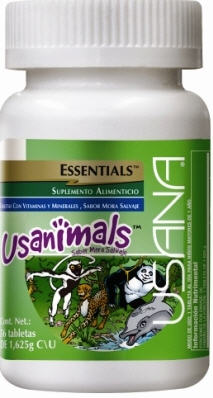How to get kids to take their vitamins
You cannot expect a small child to swallow a tablet or a chunk of a tablet. You can crush the tablet (or tablet fraction) and give the resulting powder in juice or mixed in a bit of food. Hot food is not an appropriate choice for heat-sensitive vitamins. Applesauce or other pureed fruit works well; pineapple or other sweet juice is fine, as well. Pick a food or drink that hides a vitamin taste nicely. Remember, you get to swallow these things whole. Vitamins are not put into tablets for nothing! I still remember the time my father first gave me a vitamin pill when I was a kid. I innocently asked him if it was chewable or not and his answer was, “Try it”. Crunch. Yuk.
Giving “doctored” portions early in the meal helps ensure children get down. Use as small an amount of juice or fruit as possible rather than “taint” an entire portion. The moment the dose is swallowed, immediately follow it with a favorite “chaser”: sweet juice or fruit will take away any aftertaste. We would go so far as to have two cups of juice on the table in front of the child: one contained an eighth cup or less of juice with the powder mixed in; the other cup was comfortably full of juice only. The moment the old-tasting juice disappeared, we had the yummy juice right at the kid’s lips. Speed is important here. Hit the taste buds with a nice flavor before they even get a chance to figure out the first one.
Chewable supplements are tasty and convenient. Once a child is old enough to handle chewable tablets, he or she will usually take them without complaint. Beware of artificial colors, flavors, and especially sweeteners. These potentially harmful chemicals are money savers for the manufacturer and do no good for your child. Try a health food store, and always read labels.
Here is one way to tell if a child is old enough to swallow a vitamin tablet: offer a small cash reward if the kid can do it. Since chewable tablets tend to be more expensive than regular tablets containing the same amounts of nutrients, you will still be money ahead if this works. Start first with a small capsule. Tell the child that it is okay if they can’t swallow this like a big boy or girl can. Pride and spending money seem to be an irresistible combination for kids. For the child of an age that should be able to handle a tablet or pill but says, “I can’t swallow that monster”, try this: have him or her put it under the tongue and not worry about it, when concentrate on swallowing a big gulp of water. The pill finds its way into the slipstream.

When in public places, keep supplements low-key. Likewise, when visiting relatives, there is no need to make a show or an issue over children’s vitamins. You can give your child their vitamins before you leave home or when you get back. Chewable supplements that look and taste like candy are convenient in more ways than one. Health food stores and pharmacies have a variety of popular vitamin products that do not even resemble “pills”. Technically, most schools require a letter from a doctor giving permission for a child to take supplements at school. If you can get such a letter from your doctor, it is handy to have. There is no reason for any kid to be singled out at school just because supplements have always been a part of their good diet. Most principals are sensitive to children’s feelings and will respond well to your friendly parent note or phone call.
Your children don’t like tablets? Many vitamins (notably vitamin C) are available in powdered form; some multiple vitamins are, too. If you cannot find powdered supplements, you can make your own: gelatin capsules may easily be pulled apart, and tablets can be crushed between two spoons or in a mortar and pestle. The result is utterly unflavored, so mix with juice or applesauce. Remember that the shelf life of liquid and powdered vitamins is much shorter than vitamins in capsules or tightly pressed tablets. We often put our vitamin C powder in small, easily closed bottles and work from them. Read expiration dates whenever you buy vitamins.
If too big to swallow, fat-soluble vitamins or fish oil that come in capsules should not be a problem. With a needle, poke a hole in each end and squeeze the contents into something tasty.
If a certain vitamin supplement does not agree with your child, you might want to simply try a different brand. Like ice cream, some products are artificially colored or flavored. Natural brands tend to be better in this regard. Always read the label, looking for what is not in the tablet as well as what is. It is worth remembering that many times a person is having a problem only with the tableting ingredients (excipients).
For brand suggestions, you might ask friends what ones they like and why. Health food stores are very willing to help you select an appropriate supplement. Health professionals may have an opinion as well. Remember to consider the source of your nutritional information. Let the buyer beware and do some research on the Internet. You need to know that you are doing, and why. You can also write directly to manufacturers for a full disclosure of all ingredients and excipients in every nutritional product the company sells.

